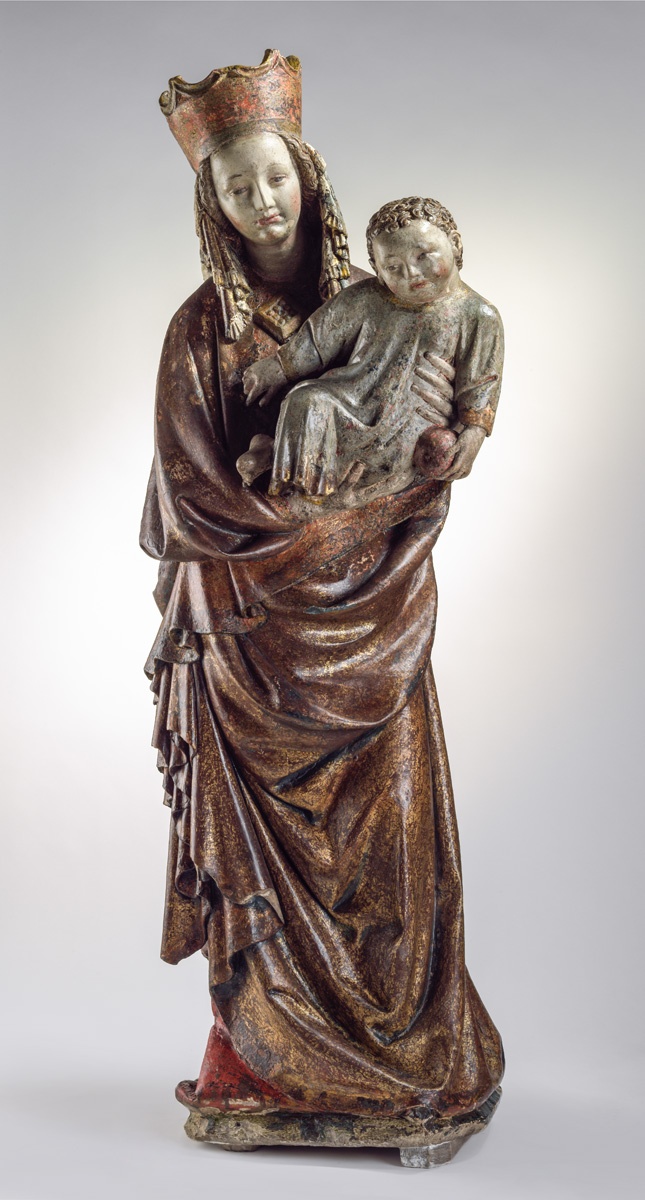European art around 1400 took on a uniform stylizing decorative style which swept away the differences between the various artistic centres. This style, which appeared simultaneously in many important centres in Europe and affected all branches of art, is now known as International Gothic. The lyrical, soft elegant style of late Gothic is perhaps most strikingly embodied in the contemporary Madonna statues, which were known as Beautiful Madonnas on account of their main characteristic, the idealized charm suggestive of supernatural beauty. This outstanding statue is one of the best known of the Beautiful Madonnas. Typically for this type, here too the Virgin is shown with a conspicuously young face, a tall crown, and her markedly emphasized S-bend body is covered by a softly draped ample cloak carved into tubular pleats.Identifying the place where the Beautiful Madonnas were made, in the uniform style that infused all of European art, is usually a very tall order. In the case of the Budapest sculpture, bought on the Frankfurt art market, even the provenance is doubtful. Thus it has been associated with almost every important artistic centre of the time: it has been considered a Rheinish, Silesian, or Salzburg work, but most likely seems an origin in the Prague region. Equally debatable is the time it was sculpted. While it was initially compared to early Madonnas produced around 1390, it is now held to be rather a work from the close of the period, at about 1430.Miriam Szőcs
en

